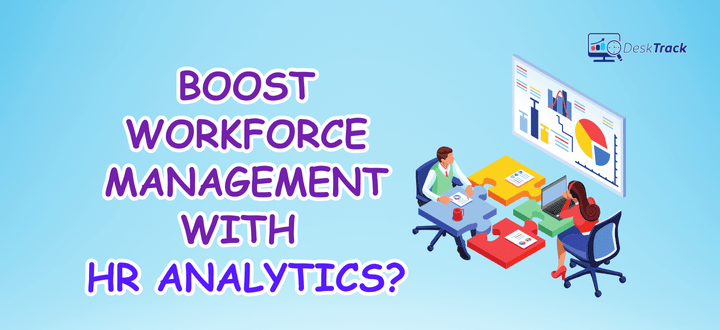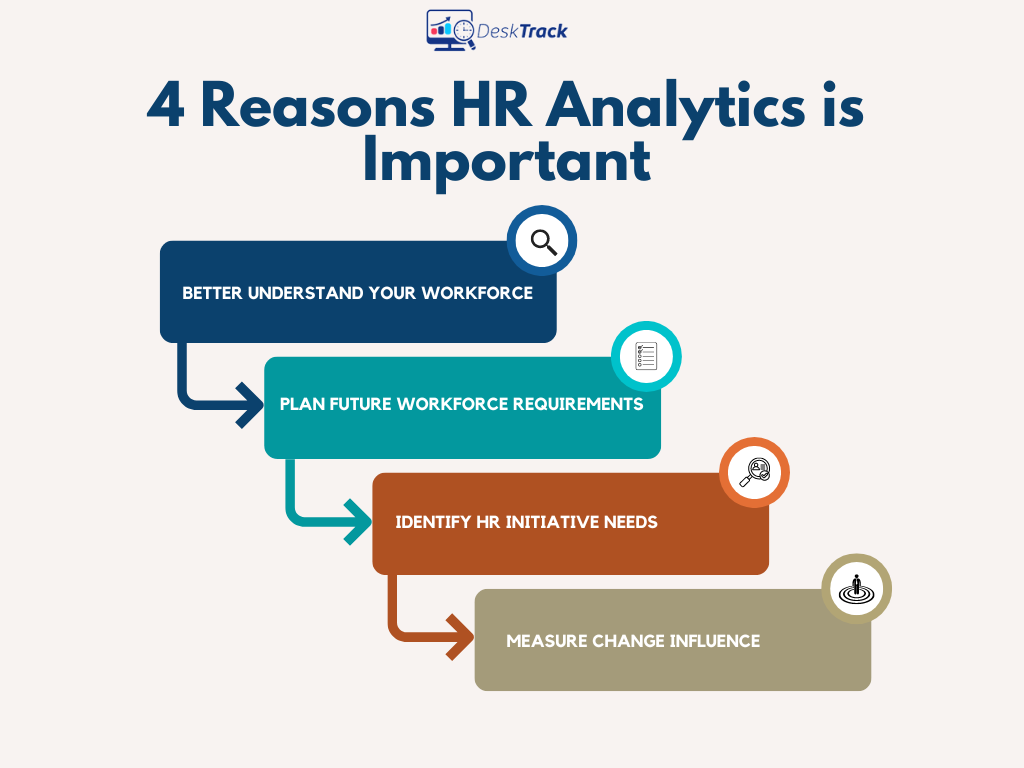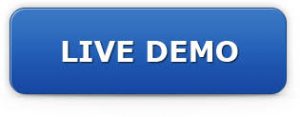
HR Analytics is the core of any business and is thus very important for running your organization. Concerning that, good workforce analytics will grow your business. However, if not, you will incur losses, leading to major issues that we don’t want.
That’s why it is important to have the best solutions for HR analytics for workforce management to enhance your processes and have a smoother workflow. So, in this blog, we will explore all there is to it on workforce analytics and how you can improve it to take your business to next-level growth and success.
What is HR Analytics for Workforce Management?
HR analytics or as we more commonly know it, workforce analytics or people analytics is the evaluation of employee data to circulate HR functions. It involves incorporating various HR metrics in your organization and continuous performance evaluations.
This lets you identify workforce patterns, drive policies, and find improvement areas. What we like about it is that it leaves no room for guesswork as you make fact-based decisions. However, what are those essential HR metrics?
Read Also – Guide on An Employee Monitoring Tools: Types and Methods
Key HR Metrics To Focus
Knowing workforce HR analytics is one aspect. However, properly executing the process is another. Thus, firstly you are required to know about these metrics. Furthermore, we have also got simple examples for better understanding. So, let’s get right into it.
Revenue Per Employee
In simple words, it is the return on investment for every employee in your company. This includes how much money they are earning you against the salaries and benefits you are providing. If you know simple math, then calculating this only requires dividing the total revenue by the total workforce. Overall, tracking this lets you know your staff’s financial efficiency.
For instance: Let’s say you have 100 employees bringing in $10000 in revenue, then your revenue per team member will be $100.
Filling Time
Keeping track of the hiring team’s efficiency is also essential. Hence this metric. You calculate this by counting how long it takes for a position to get filled.
For instance: If you opened a position on 6th December, and the hiring process was finished by 21st December, then it took 15 days to fill the designation.
Rate of Turnover
Here, you have to consider two rates. That is voluntary and involuntary. Let’s understand these first, shall we?
- The voluntary turnover rate is the number of employees who resign.
- The involuntary rate is the number of employees whose contracts were terminated.
Furthermore, the former decides how good your organization is at retaining staff. However, the latter decides how it hires and efficiently manages the right people. It’s as simple as that.
For instance: A 10% voluntary turnover rate will be 10 out of 100 employees leaving your organization.
Rate of Offer Acceptance
You also need to identify how good your hiring team is at convincing the candidates to accept job offers. This is very essential to be high. It’s because if the job offers in your company are highly rejected, then your hiring team is doing a bad job at what it’s supposed to do. In this case, we recommend making some adjustments.
For instance: 10 out of 20 offers being accepted would be a 50% offer acceptance rate.
Rate of Retention
This is quite similar to the turnover rate. However, here you identify how good your team is at keeping employees working for your business. We can either check it at the managerial or organizational level.
For instance: A 95% retention rate is 95 employees staying out of a total of 100.
Rate of Absence
This is the total number of days your employees don’t show up at work, excluding authorized time off. Also known as absenteeism, organizations should ensure that this rate is always low.
For instance: Let’s say there were 20 possible work days in June. One of your employees worked for 14 days and was on leave for the next 3 days. Overall, 14 out of 17 work days is about 18% absenteeism.
That covers all the metrics. However, what are the advantages of so much hard work on just one element of running an organization?
Benefits of Workforce Analytics
From the start of this blog, we have been talking about HR analytics for workforce management. However, is it any good? Are there any benefits? Let’s discuss it now.
Find Improvement Areas with Automation
Your workforce is essential. However, there are some tasks where their productivity and ROI may be low. that’s why, with efficient workforce HR analytics, you can find areas where automation is a better option. We are talking about using machines, wherever required.
Enhances Employee Engagement
HR analytics is more than hiring and firing. Effectively applying it will let you identify the reasons why your employees are lagging. When you find what can keep your employees satisfied, you get the right values for the performance metrics, we discussed above. Especially, retention rate.
Optimizes Hiring Processes
No matter, how large your company or its scope is, we say that getting the right candidate for the designation is always complicated. However, with the right analytics, you can easily pinpoint the strengths, experience, and performance level you require.
Enhanced Employee Relationships
Interpersonal relationships between employees are also essential for teamwork and overall productivity. However, sometimes, a few employees can’t get along very well due to personal differences. To sort this out, you have to make decisions for these employees to work together. Workforce analytics here will only simplify the process.
Overall, the right people analytics is the best for growth and success. However, how do you achieve this?
Read Also – Best Remote Employee Monitoring Software For Work From Home
Practices for Effective HR Analytics
HR evaluation is more than just one sure-shot way to success. We mean that applying a single HR analytics strategy will not work. We recommend identifying and balancing the right tools and metrics, which are cost-effective while giving you insightful details on your workforce.
Make Data-Driven Decisions
We recommend having a positive approach here. I.e., get the reports and support your managers to make the best decisions based on this information.
Use the Best-fit Tools
Two things. What data you will measure and how often? The right HR analytics software for your organization must have all the comprehensive features to meet your requirements.
Ask Data-Backed Questions
We recommend meeting your managers and directly asking them data-backed questions. For example, if you ask how much time it took to fill the current position, then they must know the metric.
Convert Data into Action
Only collecting data through employee management system won’t do you any good. Using the data to take the best action for growth is essential.
Focus on Leadership Buy-in
Workforce HR analytics won’t work unless your leadership team makes it a major part of their workings. That’s why, you need to ensure that happens and your team continually works for the same.
Get Feedback
HR analytics for workforce management is all about people management. Thus, it’s again essential to get their feedback and make necessary changes, if required.
That wraps up the best practices for people analytics. However, the importance is still not clear.
4 Reasons HR Analytics is Important

Efficient HR analytics for the workforce ensures success and growth for your organization. However, the importance is not limited to this only. With that, here are 4 reasons it matters.
Better Understand Your Workforce
Relying on employee surveys, questionnaires, and feedback to guide your HR decisions is a thing of the past. Furthermore, experts say that 90% of these reviews are unreliable. Compared to that, tools for HR analytics will do the same. However, with fact-based data.
Plan Future Workforce Requirements
Want to get better talent and avoid overhiring and layoffs? We have been discussing your answer throughout this blog. All you have to do is regularly collect and analyze performance metrics, allowing you to accurately predict the staffing requirements to accordingly plan changes.
Identify HR Initiative Needs
Let’s talk facts here. In the USA, 33% of hiring managers want a decreased employee turnover. Furthermore, according to a survey, 20% of employees think of quitting daily due to burnout. However, that’s not all, 95% think that they are pressured to overwork. So, how can you prevent this? The solution is effective workforce analytics.
Measure Change Influence
In short, you get real-time change management data through human resource analytics. This includes productivity measurement values and other metrics. In short, the right analytics will let you identify how your change is affecting your organization.
That wraps up the main topic. However, all this looks and sounds complex to successfully execute. Is there a tool or software to simplify this essential element in your organization?
Top 10 HR Analytics Software
So far, so good. Till now, we have wrapped our heads around workforce analytics and its importance. With proper human resource analytics, your organization will move forward with the right people for the right job. However, that’s a heavy burden and complex task. Fortunately, we have you covered with the top 10 hr analytics software that will reduce the hassle of your administrative department by around 70%.
- DeskTrack
- IntelliHR
- Tableau
- Crunchr
- Qualtrics
- DreamTeam
- BambooHR
- ChartHop
- Microsoft Excel
- Microsoft Power BI
1. DeskTrack
DeskTrack is the best HR analytics software in the industry. With the most intuitive user interface and comprehensive features, it helps you automate your daily HR tasks and reduce burdens, errors, and inaccuracies. Plus, it can seamlessly integrate with your payroll tools for simpler invoice and bill processing. However, beyond simple workforce analytics, it’s the best employee monitoring, time tracking, productivity tracking, and project management software integration.
Key Features:
- Real-time data analytics and reporting
- Seamless payroll integration
- Project and task management
- Real-time employee activity and time-tracking
|
Best For |
Initial Pricing | User Pricing |
| Best overall | $5.99/user/month |
5/5 |
2. IntelliHR
The next software for HR analytics on our list is IntelliHR. Best known for ease of use, this tool provides you with intuitive reporting and customizable dashboards. Although it lacks a plethora of features, the analysis feature in this software is robust. That’s what matters. It’s a great choice. Especially, if you are working with human resource analytics software for the first time. Furthermore, what we like about this one is that the detailed reporting provides you with useful insights into your workforce.
Key Features:
- Easy-to-use interface
- Intuitive reporting
- Customizable dashboards
|
Best For |
Initial Pricing | User Pricing |
| Ease of Use | $3.60/user/month |
4.8/5 |
3. Tableau
If you are looking for an HR analytics tool for deep data analysis, then Tableau is the software for you. The software claims to help businesses of all sizes understand their data better. Plus, you can use it as a deep data analysis platform for employees and HR anywhere. Mostly popular for many business functions, it has been used by a plethora of organizations over the years. However, it is difficult to learn and can be expensive, and you need to hire a data expert to manage this tool.
Key Features:
- Data visualization
- Customizable dashboards
- A large community of resources
|
Best For |
Initial Pricing | User Pricing |
| Deep data analysis | $15/user/month |
4.6/5 |
4. Crunchr
Crunchr is the best HR analytics software for working across multiple platforms. With a beautiful user interface, easy-to-use features, and intuitive data analysis and reporting, it’s one of the best human resource analysis platforms. Plus, the best part is that it can integrate with a lot of tools while providing you with a single platform to track your data while you find new information from it. However, it relies on data from other platforms. Plus, the pricing isn’t readily available, which can be annoying.
Key Features:
- Intuitive data analysis and reporting
- Easy to use
- Beautiful user-interface
|
Best For |
Initial Pricing | User Pricing |
| Working across platforms | Quote on contact |
4.9/5 |
5. Qualtrics
If you want to improve employee engagement, then nothing is better than this software for HR analytics. With this one, you get 360-degree feedback modules, which let you get employee insights about how they feel about your HR processes and operations. This surveying tool majorly impacts employee engagement, productivity, and planning as you can quickly address and solve any issues. However, there is no free trial available and it’s not a complete analytics solution.
Key Features:
- 360-degree feedback modules
- Get employee insights
- Get employee feedback across all HR functions
|
Best For |
Initial Pricing | User Pricing |
| Employee engagement | Quote on contact |
4.7/5 |
Read Also: Top 10 Best Strategic Planning Software in 2024
6. DreamTeam
DreamTeam is the next HR analytics tool on our list and is probably one of the best for your remote teams due to the built-in communication tools it provides. Plus, it’s easy to use, has an intuitive user interface, and provides you with some of the best recruitment data tools, making it one of the best HR software for recruiting. Plus, it provides you with the capability to manage every HR function from a single platform. However, there is no mobile application.
Key Features:
- Built-in communication tools
- Easy to use
- Intuitive user interface
- Recruitment data tools
|
Best For |
Initial Pricing | User Pricing |
| Recruiting | Quote on contact |
4.8/5 |
7. BambooHR
What we like about BambooHR is its easy-to-use interface and the comprehensive mobile app. The best HR analytics software for recruiting, performance management, onboarding, and everything that comes in between, it provides you with a plethora of comprehensive human resource management features. What we like about it is the built-in analytics tool, allowing you to collect employee data at every step of the employee life cycle. However, it can get expensive as you need to buy add-ons.
Key Features:
- Easy to use
- Mobile application
- Complete HR solution
|
Best For |
Initial Pricing | User Pricing |
| All-in-one HR solution | Quote on contact |
4.6/5 |
8. ChartHop
With its built-in compensation review system, this software for HR analytics takes compensation and headcount reporting to the next level. ChartHop makes it easy for you to compare your headcount to performance to identify gaps at any given time. Similarly, measuring compensation and how it relates to performance management is simple. However, there is a minimum contract size with a one-time implementation fee. As if that was not enough of an issue, it has a sizable learning curve.
Key Features:
- Intuitive compensation and headcount reports
- Built-in compensation review system
|
Best For |
Initial Pricing | User Pricing |
| Rewarding performance | $8/user/month |
4.7/5 |
9. Microsoft Excel
Unless you have been living under a rock for your entire life for your entire life, you must have heard of or used Microsoft Excel at least once. This spreadsheet software can also be used as an HR analytics tool in a way. With an easy-to-use interface, unlimited spreadsheet creation with custom charts and graphs, and a plethora of basic formulas, it comes as a handy tool for the job. However, its functionality is only limited to analytics on spreadsheets with basic formulas. For anything complex, you would want to look for some other tool.
Key Features:
-
- Easy to use
- Unlimited spreadsheet creation
- Plethora of basic formulas
- Create custom charts and graphs
|
Best For |
Initial Pricing | User Pricing |
| Analytics on spreadsheets with basic formulas | $6/month |
4.8/5 |
10. Microsoft Power BI
Microsoft Power BI is one of the best HR analytics software for data visualization. With a plethora of collaboration tools, customizable reporting, data import and export, visual analytics, and other intuitive features, it is another handy tool from Microsoft. Primarily, a business intelligence tool, it provides you with the capability to connect, analyze, and share data into visually appealing dashboards and reports. However, that’s that. If you are looking for more human resource analytics features, we recommend looking for some other tool.
Key Features:
- Collaboration tools
- Customizable reports
- Data import and export
- Visual analytics
|
Best For |
Initial Pricing | User Pricing |
| Data visualization | $10/month |
4.6/5 |
Why is DeskTrack the Best Software for Workforce HR Analytics?
So now that we know the importance and complexity of the right HR analytical process. We also discussed its benefits. However, if you pay too much attention to it, you will neglect other important tasks. We recommend using the best workforce management tool to get ease of access. DeskTrack offers all the comprehensive features you require including real-time employee performance reporting to simplify all these complex processes.
Conclusion
Effective HR analytics for workforce management is the core to running any business. It is the process of identifying your workforce performance and patterns to make the best data-driven decisions. To achieve this, you need the right metrics and best practices to go along and get advantages including enhanced employee engagement. HR analytics is important as it lets you understand your workforce and plan the needs for HR initiatives to tackle change management. However, it is a complex process regardless of your organization’s size and scope. Overall, you will want the best software to simplify workforce analytics. We recommend DeskTrack for the same.
Frequently Asked Questions (FAQ)
Q. What is HR Analytics?
Ans. Human resources are considered the most essential resource for any organization. That’s why, it is also important to know what they are doing for your company. HR analytics in that sense is a data-backed evaluation of your organization’s performance and other requirements. Effective analysis ensures that you meet all the metrics.
Q. What are the 7 Pillars of HR analytics?
Ans. As we already know there is a process for proper HR evaluation. However, it’s a complex one and not a one-sure-shot strategy. Hence, the 7 pillars:
- Workforce planning.
- Talent sourcing.
- Talent acquisition.
- Onboarding culture fit and engagement.
- Performance management and employee lifetime value.
- Talent retention.
- Employee wellness and well-being.
Q. How are HR Analytics Used?
Ans. Using workforce analytics properly will result in growth and success for your company. Effectively applying the process with the right tools and metrics will:
- Lets you identify how good your hiring team is at their job.
- You will know how you can improve employee performance.
- Identify workforce patterns with past and present data comparison.
- Enhance employee management and streamline performance workflows.
Q. What are Some Examples of HR Analytics?
Ans. HR analytics is a complex step-by-step process. To better understand it, you need to start with the performance metrics. These include:
- Revenue per employee.
- Turnover rate.
- Employee retention rate.
- Offer acceptance rate.
- Time to fill.
- Absenteeism.






